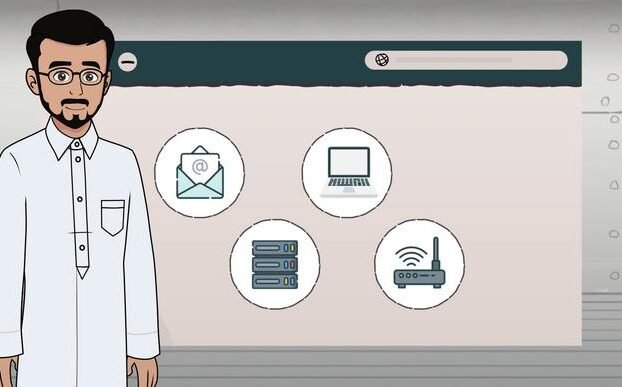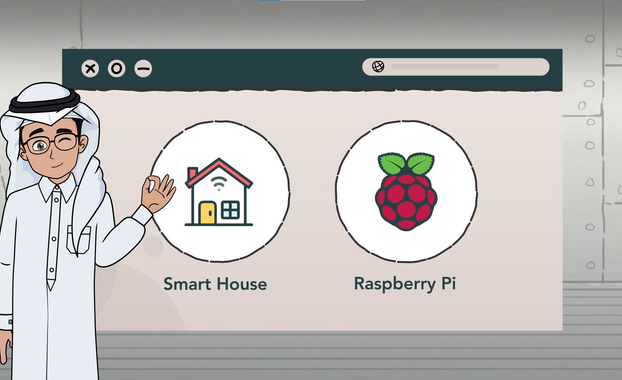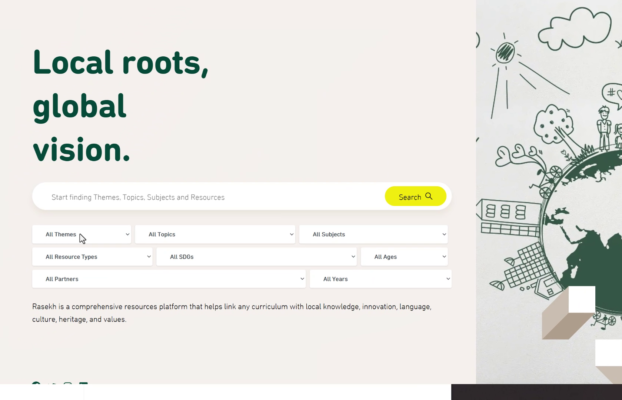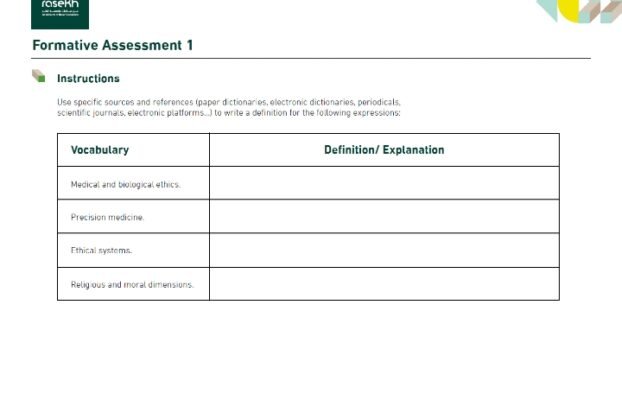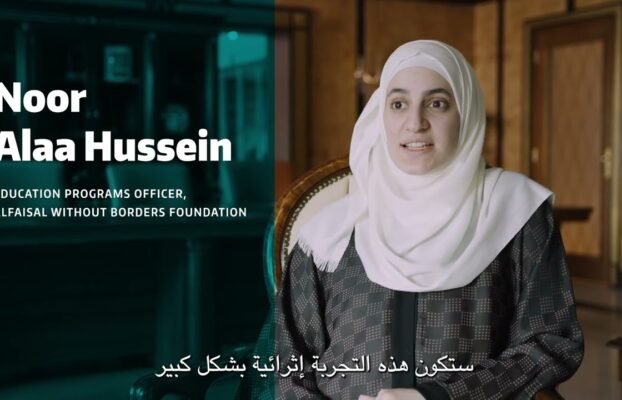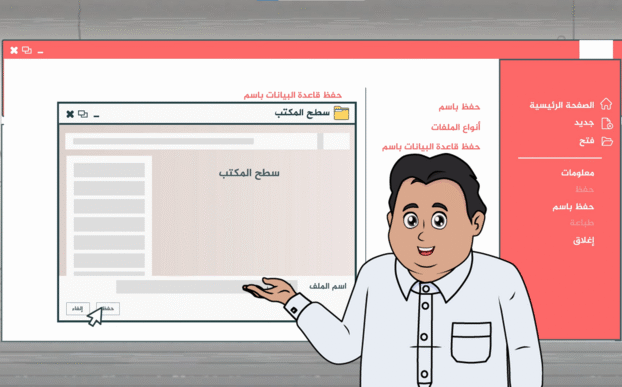Weather
Weather Radar
-
Sustainability
QNV 2030: Environmental Development
-
Resource Plan
-
SDG 13: Climate Action
-
14 - 15 years
-
Geography, Language(s), Maths
-
Resource ID: 17655
- Share Feedback Embed Resource
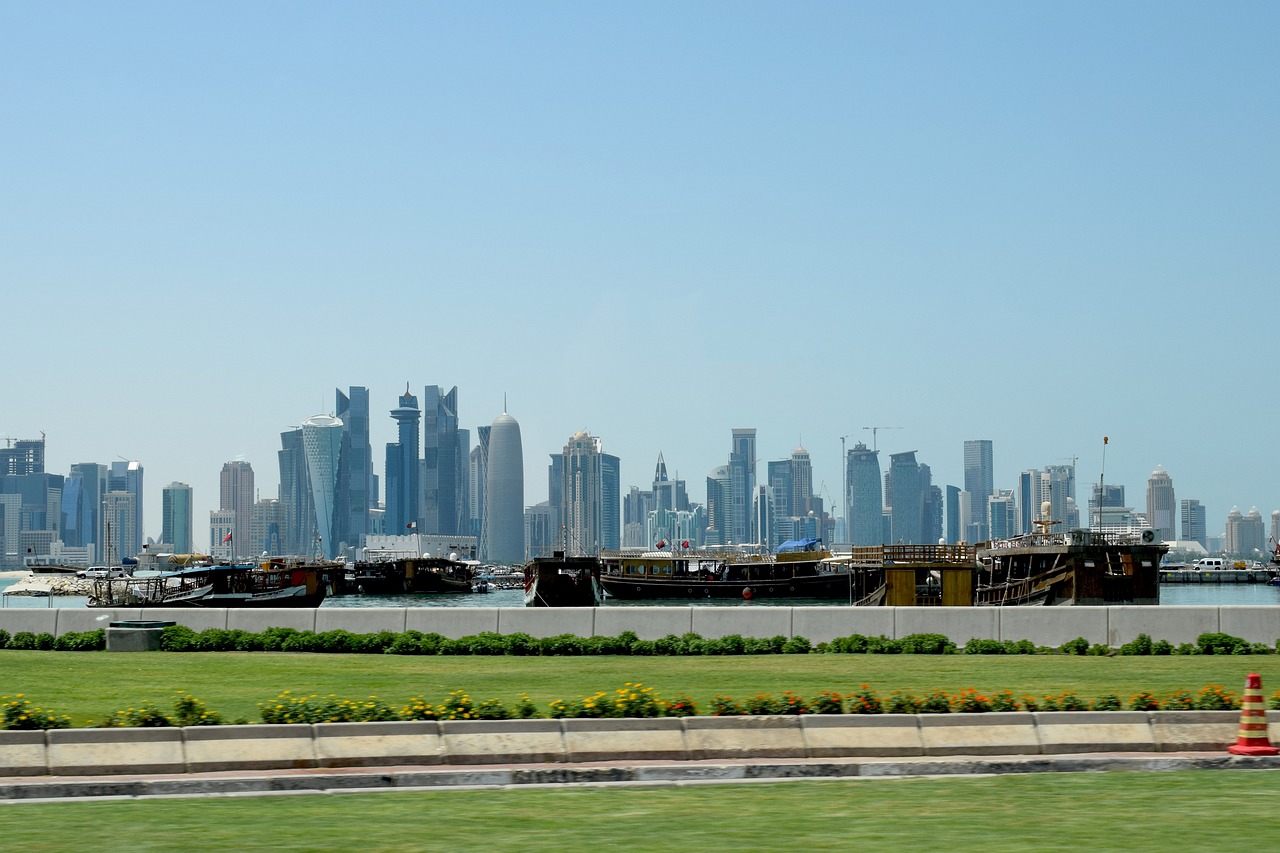
Overarching Goal(s)
- To nurture learners as global citizens who are connected to their own identity.
- To equip learners with the knowledge, skills, motivation and understanding to demonstrate the importance of Glocalization as a sustainable model for learning.
- To inspire students to act sustainably from both local and global perspectives.
Learning Outcomes
- Learners analyze and interpret the diversity of opinions, and ideas relating to glocalization within both local and global contextual and conceptual frameworks.
- Learners describe, explain and interpret the characteristics, structures and interactions of a theme, group, project or organization related to glocalization.
- Learners develop lifelong skills which support their sustainable actions.
- Learners reflect on the impact of their actions and demonstrate their understanding of the action as related to sustainability.
Possible Duration (Hours)
6-7 hours
Qatar National Vision 2030 Connection
Qatar National Vision 2030: The students will understand how the environmental development pillar applies to weather changes locally.
English: https://www.gco.gov.qa/en/about-qatar/national-vision2030/
Arabic: https://www.gco.gov.qa/ar/about-qatar/national-vision2030/
Source: Government Communications Office (2023). Qatar National Vision 2030. [online] Government Communications Office. Available at: https://www.gco.gov.qa/en/about-qatar/national-vision2030/
Sustainable Development Goals (SDGs) Connection
SDG 13: Climate Action: The lesson provides an opportunity for the students to connect with Qatar Meteorology Department for weather reporting in The State of Qatar.
The 17 Sustainable Development Goals, United Nations
English: https://sdgs.un.org/goals
Arabic: https://sdgs.un.org/ar/goals
United Nations (2024). The 17 Sustainable Development Goals. [online] United Nations. Available at: https://sdgs.un.org/goals.
Action Learning Outcomes
- Learners become more aware of their own strengths and areas for growth.
- Learners undertake challenges that develop new skills.
- Learners persevere in action.
- Learners work collaboratively with others.
- Learners consider the ethical implications of their actions.
Content
The content of the lesson tool revolves around identifying and understanding the role of Qatar Civil Aviation Authority, Mukaynis Meteorology Center and weather observations.
Resource Utilization and Identification: Qatar Civil Aviation Authority (QCAA)
Subject Matter: Geographical locations and weather monitoring systems, observations and recording and reporting weather conditions, and Language(s).
Glocalization Connections: Connect to changes in weather required to monitor safety for residents, visitors and passengers during traveling in and around the country or abroad.
Differentiation: The higher ability students will support the lower ability students. They will involve them by asking them questions to check their understanding of the observations, when recording and measuring the weather conditions.
Critical Thinking: Encourage students to gather data, sustainable solutions and research Islamic, and cultural connections that relate to weather. For example, the supplication (Du’a) and meaning of seeking rain in dry climates, the supplication (Du’a) and meaning when it rains and the blessings of rain.
Real-world Application: Discuss and explain how to raise environmental awareness about staying safe in certain weather conditions and applying sustainable Qatari culture or Islamic connections.
Strategies
The strategies employed in this lesson tool are designed to foster analyzing, critical thinking, inquiry, collaboration, and innovative engagement. They include visible thinking routines, responsive pedagogy, and problem-solving approaches to adapt to students’ needs and encourage active participation. Students apply meaningful learning experiences that connect to weather monitoring for the State of Qatar.
Responsive and Adaptive Pedagogy: Adjust the pace and level of guidance based on student responses and engagement.
Visible Thinking Routines: Implementing the “Connect-Extend-Challenge” thinking routine strategy is useful for students to build on new ideas and prior knowledge which often results in rich discussions.
Inquiry: Encourage students to inquire about the significance of monitoring weather changes for air and ship transporters, travelers, residents and visitors.
Collaboration: Facilitate a class discussion forum where students can share and compare their perceptions, promoting collaboration and the exchange of diverse perspectives.
Assessment for and as Learning: Use formative assessments for student responses and presentations.
Problem-Solving: Ask students to identify and propose solutions to challenges in climate and environmental surroundings.
Learning Experiences
Learning Engagement 1: Understanding the role of Qatar Civil Aviation Authority and The Mukaynis Meteorology Center
Learning Objective: To understand the role of Qatar Civil Aviation Authority and The Mukaynis Meteorology Center
Introduction and context setting
Students will use the ‘Connect-Extend-Challenge’ visible routine and record notes in their notebooks. This visible routine helps students to draw connections between new ideas and prior knowledge.
Connect – How do countries locally and globally monitor weather conditions?
Extend – Why is it useful for a country to monitor changes in weather conditions?
Challenge: What tools or systems help to monitor weather conditions in a country? To what extent or geographical area(s) can weather conditions be monitored?
Student friendly guiding questions:
What is the role of the Qatar Civil Aviation Authority?
What is the name of the field of science that studies the changes in weather on a frequent basis in a specific place?
What is the role of meteorological stations?
How do they predict the weather changes, and in what ways does this affect us?
Why is it necessary to gather weather statistics for climate research?
What information do you think the weather statistics provides?
Who will utilize this data and for what purpose(s)?
How does the data assist the Civil Aviation Authority in relation to aviation?
Reflection
Students will share some of their responses with the rest of the class. The teacher facilitates a class open discussion to develop further thinking.
Activity: Exploring Mukaynis Meteorology Center
Resource 1: Mukaynis Meteorology Center: https://www.youtube.com/watch?v=jTXLoy-4mLk
Resource 2: The QCCA and Mukaynis Meteorology Quiz: https://rasekh.qa/wp-content/uploads/2024/08/Resource-2_-QCCA-and-Mukaynis-Meteorology-Center-Quiz.pdf
Resource 3: Supporting Additional Reading Resource about the role of the QCCA: https://www.caa.gov.qa/en/brief
In Arabic: https://www.caa.gov.qa/ar/brief
Instructions:
The teacher will show the resource video of The Mukaynis Meteorology Center to the students. They can follow the English subtitles. Then each student will be provided with the Resource 2 quiz, where the teacher can monitor their responses. For example: teachers can set this as an assignment through their individual folders in Google Classroom. Students will highlight their responses in yellow.
Peer Reflection
Students will pair up with another student in the class; they will discuss and compare their responses. Any changes they wish to make they can highlight using another color, for instance, green.
Then the teacher will select some pairs to share their responses and invite students to come up with any questions they may have about the Mukaynis center’s role and purpose.
Learning Engagement 2: Observing, measuring and presenting weather data.
Learning Objective: To observe, measure and present weather data.
Introduction and context setting
Think, Pair and Share collaborative strategy
Think – Students will think of different types of weather observations and instruments used to determine how weather can be measured .
Pair – Each student will pair up with another student and they will share their thoughts of the different types of weather observations, weather instruments and how they can be measured. They will discuss, and record the information in their notebooks. They should be encouraged to explain any challenges with any of the suggested observations, instruments or measurements.
Share – Students will share their observations and findings with the rest of the class and the teacher will make a note of responses on a class flip chart paper.
Activity: Weather Observers and Presenters
Resource 4: Weather recording sheet template: https://rasekh.qa/wp-content/uploads/2024/08/Resource-4_-Weather-Recording-Sheet-Template-make-a-copy-for-each-group.xlsx
Resource 5: Visual video to create a simple handmade anemometer, where the school lab has no available anemometers: https://youtu.be/DqeYyRKWpL8?si=vjL4JPEFZx8tYodZ
Instructions
The teacher will explain to the students that they will observe the weather over a course of one week and will record their results on Resource 4: Weather Recording Sheet. The students will work in small groups and each group will have a copy of resource 4 to record their group’s observations. The teacher will explain to the students that at the bottom of the Excel sheet there are three tabs for three different weather conditions. Each group of students will observe and record the temperature sheet for one week, and the wind speed or rainfall depending on the weather during the week of the observations. Also, the teacher will ensure that the required resources are available for the students so that they are able to record their observations.
Observing and recording wind speed:
The students will be provided with school anemometers (which is recommended and suitable for accurate recordings) that measure the wind speed. Each group of students will observe and record the wind speed on their Excel sheet. They should know the purpose of Anemometers, which is an instrument that meteorologists use to measure and accurately monitor wind speed. Measurements will depend on the anemometers the school uses.
Note: If the school does not have access to an anemometer it can be made by placing four paper cups on four arms that rotate. If it is windy, the arms will spin faster.
Equipment needed:
4 paper cups (one colored or painted to help count the number of rotations)
Two equal sized strong cardboard strips of 30 cm in length and 3 cm wide (for the spinning arms)
Cylinder rod around 25 cm in length; around 1-1.5 cm wide (cardboard or straw)
Drawing pin
Adhesive tacks
Fast drying clay (7cm square block)
Take the two long strips of cardboard and make an ‘x’ with them. The long strips ‘arms’ should spin freely. In the center make a hole with a drawing pin carefully and safely, then attach it to a long rod. Use the adhesive tacks to keep in place if extra support is needed to keep it supported in the center and upright. Place the long rod in the center of the fast drying clay block to keep the rod upright and steady. At the end of each of the long cardboard strips attach a paper cup horizontally using the adhesive tacks placing the open part outwards.
Each group of students will count the number of times the anemometer makes a complete rotation in 30 seconds to measure the wind speed using the handmade anemometer. The students will need to multiply this number by 2, which measures wind speed in rotations per minute (rpm). They will monitor the wind speed through the week and record their observations on resource 4.
An alternative simple visual video demonstration to make an anemometer. Resource 5: Stem Activity Wind Anemometer for Kids, Rebel classroom: https://youtu.be/DqeYyRKWpL8?si=vjL4JPEFZx8tYodZ
Observing and recording rainfall:
Equipment needed:
Strong plastic transparent bottle without the lid
Funnel
Each group of students will be provided with a strong plastic transparent bottle without a lid as a funnel will be placed inside to allow rain to be collected. The bottle with the funnel inside will be placed outside in the rain over the days it rains. At the end of each day the students will measure how many mm of rain has been collected and will record this on their excel sheet. A few days to gather rainfall recordings is sufficient, if it doesn’t rain the whole week.
Observing and recording temperature:
Equipment needed:
Weather thermometer
The students will measure the temperature using the school weather thermometers that are student-friendly and safe for use. The temperature will be measured in degrees celsius. If it is too hot outside, the students can search the weather temperature from Qatar’s Civil Aviation Authority website of the weather temperature: https://www.caa.gov.qa/en/weather-information. The teacher will remind the students that the same geographical area should be used for the week’s observations and recordings.
Each group will record their data on their Excel sheet, and they will create a chart using the excel sheet tools. Every student should participate and collaborate with their group during the observations, recordings and presentation. They should take some photos using their iPads to add to their presentation. Each group will prepare a presentation to report the weather, and measurements in their location. They can present their data using any digital presentation. For example, Powerpoint or Google Slides and must include a map of the geographical location their data is based on.
They should be encouraged to be creative and informative as they will have the role as weather presenters to report the weather to their colleagues. They should come up with some tips on how to be safe during hot weather, rain or windy days. In addition to this, students must come up with one local cultural or Islamic significance that weather has on sustainability locally and globally.
Reflection
3-2-1 engagement strategy that allows students to record their own comprehension and summarize their learning.
After each group has presented, students will write on a post-it-note:
3 things that they learned
2 things that they found interesting, and
1 question they still want to know more about.
They will add their post-it notes inside their notebooks used for the previous Think-Pair-Share activity. They will be encouraged to research the information to their question(s) during their free time.
Checking for Understanding
Learning engagement 1: Understanding the role of Qatar Civil Aviation Authority and The Mukaynis Meteorology Center.
Review student responses from the Resource 2 quiz to check for understanding.
Learning Engagement 2: Observing, measuring and presenting weather data.
Check student presentations to assess comprehension and application of weather observations, recordings and data.
Differentiation
The higher ability students will support the lower ability students. They will involve them by asking them questions to check their understanding of the observations, when recording and measuring the weather conditions.
Key Vocabulary
anemometer, aviation, climate, heat, interpretation, maps, meteorology, observations, radar, rainfall, recordings, temperature, weather, wind, wind speed
Resources
Resource 1: Mukaynis Meteorology Center: https://www.youtube.com/watch?v=jTXLoy-4mLk
Resource 2: The QCCA and Mukaynis Meteorology Quiz: https://rasekh.qa/wp-content/uploads/2024/08/Resource-2_-QCCA-and-Mukaynis-Meteorology-Center-Quiz.pdf
Resource 3: Supporting Additional Reading Resource about the role of the QCCA: https://www.caa.gov.qa/en/brief
Resource 4: Weather recording sheet template: https://rasekh.qa/wp-content/uploads/2024/08/Resource-4_-Weather-Recording-Sheet-Template-make-a-copy-for-each-group.xlsx
Resource 5: Stem Activity Wind Anemometer for Kids, Rebel classroom: https://youtu.be/DqeYyRKWpL8?si=vjL4JPEFZx8tYodZ (supplementary resource, if needed)
Resource Publisher
Qatar Civil Aviation Authority (QCAA)
Qatar Civil Aviation Authority (QCAA) is an official governmental institution recognized internally and externally responsible for civil aviation affairs and participates in policy development at the regional and international levels through its internal departments & units, and international organizations & associations of which it is a member.

